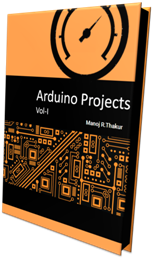The
first thing we must do when using the 8051s integrated serial port is configure
it. This lets us tell the 8051 how many data bits we want, the baud rate we
will be using, and how the baud rate will be determined.
First,
lets present the "Serial Control" (SCON) SFR and define what each bit
of the SFR represents:
Bit
|
Name
|
Bit Addres
|
Explanation of Function
|
7
|
SM0
|
9Fh
|
Serial port mode bit 0
|
6
|
SM1
|
9Eh
|
Serial port mode bit 1.
|
5
|
SM2
|
9Dh
|
Mutliprocessor
Communications Enable (explained later)
|
4
|
REN
|
9Ch
|
Receiver Enable. This bit
must be set in order to receive characters.
|
3
|
TB8
|
9Bh
|
Transmit bit 8. The 9th bit
to transmit in mode 2 and 3.
|
2
|
RB8
|
9Ah
|
Receive bit 8. The 9th bit
received in mode 2 and 3.
|
1
|
TI
|
99h
|
Transmit Flag. Set when a
byte has been completely transmitted.
|
0
|
RI
|
98h
|
Receive Flag. Set when a
byte has been completely received.
|
Additionally,
it is necessary to define the function of SM0 and SM1 by an additional table:
SM0
|
SM1
|
Serial Mode
|
Explanation
|
Baud Rate
|
0
|
0
|
0
|
8-bit Shift Register
|
Oscillator / 12
|
0
|
1
|
1
|
8-bit UART
|
Set by Timer 1 (*)
|
1
|
0
|
2
|
9-bit UART
|
Oscillator / 64 (*)
|
1
|
1
|
3
|
9-bit UART
|
Set by Timer 1 (*)
|
(*)
Note: The baud rate indicated in this table is doubled if PCON.7 (SMOD) is set.
The SCON
SFR allows us to configure the Serial
Port.
The
first four bits (bits 4 through 7) are configuration bits.
Bits SM0 and SM1 let us set the serial mode to a value between 0 and 3, inclusive.
The four modes are defined in the chart immediately above. As you can see,
selecting the Serial Mode selects the mode of operation (8-bit/9-bit, UART or
Shift Register) and also determines how the baud rate will be calculated. In
modes 0 and 2 the baud rate is fixed based on the oscillators frequency. In
modes 1 and 3 the baud rate is variable based on how often Timer 1 overflows.
Well talk more about the various Serial Modes in a moment.
The next
bit, SM2, is a flag for
"Multiprocessor communication." Generally, whenever a byte has been
received the 8051 will set the "RI" (Receive Interrupt) flag. This
lets the program know that a byte has been received and that it needs to be
processed. However, when SM2 is set the "RI" flag will only be triggered
if the 9th bit received was a "1". That is to say, if SM2 is set and
a byte is received whose 9th bit is clear, the RI flag will never be set. This
can be useful in certain advanced serial applications. For now it is safe to
say that you will almost always want to clear this bit so that the flag is set
upon reception of any character.
The next
bit, REN, is
"Receiver Enable." This bit is very straightforward: If you want to
receive data via the serial port, set this bit. You will almost always want to
set this bit.
The last
four bits (bits 0 through 3) are operational bits. They are used when actually
sending and receiving data--they are not used to configure the serial port.
The TB8 bit is used in modes 2 and 3. In modes
2 and 3, a total of nine data bits are transmitted. The first 8 data bits are
the 8 bits of the main value, and the ninth bit is taken from TB8. If TB8 is
set and a value is written to the serial port, the datas bits will be written
to the serial line followed by a "set" ninth bit. If TB8 is clear the
ninth bit will be "clear."
The RB8 also operates in modes 2 and 3 and
functions essentially the same way as TB8, but on the reception side. When a
byte is received in modes 2 or 3, a total of nine bits are received. In this
case, the first eight bits received are the data of the serial byte received
and the value of the ninth bit received will be placed in RB8.
TI means "Transmit Interrupt." When
a program writes a value to the serial port, a certain amount of time will pass
before the individual bits of the byte are "clocked out" the serial
port. If the program were to write another byte to the serial port before the
first byte was completely output, the data being sent would be garbled. Thus,
the 8051 lets the program know that it has "clocked out" the last
byte by setting the TI bit. When the TI bit is set, the program may assume that
the serial port is "free" and ready to send the next byte.
Finally,
the RI bit means "Receive
Interrupt." It funcions similarly to the "TI" bit, but it
indicates that a byte has been received. That is to say, whenever the 8051 has
received a complete byte it will trigger the RI bit to let the program know
that it needs to read the value quickly, before another byte is read.
Setting the Serial Port
Once the
Serial Port Mode has been configured, as explained above, the program must
configure the serial ports baud rate. This only applies to Serial Port
In modes
1 and 3, the baud rate is determined by how frequently timer 1 overflows. The
more frequently timer 1 overflows, the higher the baud rate. There are many
ways one can cause timer 1 to overflow at a rate that determines a baud rate,
but the most common method is to put timer 1 in 8-bit auto-reload mode (timer
mode 2) and set a reload value (TH1) that causes Timer 1 to overflow at a
frequency appropriate to generate a baud rate.
To
determine the value that must be placed in TH1 to generate a given baud rate,
we may use the following equation (assuming PCON.7 is clear).
TH1 = 256 - ((Crystal / 384) / Baud)
If
PCON.7 is set then the baud rate is effectively doubled, thus the equation
becomes:
TH1 = 256 - ((Crystal / 192) / Baud)
For
example, if we have an 11.059Mhz crystal and we want to configure the serial
port to 19,200 baud we try plugging it in the first equation:
TH1 = 256 - ((Crystal / 384) / Baud)
TH1 = 256 - ((11059000 / 384) / 19200 )
TH1 = 256 - ((28,799) / 19200)
TH1 = 256 - 1.5 = 254.5
TH1 = 256 - ((11059000 / 384) / 19200 )
TH1 = 256 - ((28,799) / 19200)
TH1 = 256 - 1.5 = 254.5
As
you can see, to obtain 19,200 baud on a 11.059Mhz crystal wed have to set TH1
to 254.5. If we set it to 254 we will have achieved 14,400 baud and if we set
it to 255 we will have achieved 28,800 baud. Thus were stuck...
But not
quite... to achieve 19,200 baud we simply need to set PCON.7 (SMOD). When we do
this we double the baud rate and utilize the second equation mentioned above.
Thus we have:
TH1 = 256 - ((Crystal / 192) / Baud)
TH1 = 256 - ((11059000 / 192) / 19200)
TH1 = 256 - ((57699) / 19200)
TH1 = 256 - 3 = 253 = 0xFD
TH1 = 256 - ((11059000 / 192) / 19200)
TH1 = 256 - ((57699) / 19200)
TH1 = 256 - 3 = 253 = 0xFD
Here
we are able to calculate a nice, even TH1 value. Therefore, to obtain 19,200
baud with an 11.059MHz crystal we must:
1. Configure Serial
Port
2. Configure Timer 1 to timer mode 2 (8-bit auto-reload).
3. Set TH1 to 253 to reflect the correct frequency for 19,200 baud.
4. Set PCON.7 (SMOD) to double the baud rate.
2. Configure Timer 1 to timer mode 2 (8-bit auto-reload).
3. Set TH1 to 253 to reflect the correct frequency for 19,200 baud.
4. Set PCON.7 (SMOD) to double the baud rate.
Circuit Diagram:
Program:
#include <reg51.h> void main() { unsigned char Message[15]={"This is test.. "}; char i; //Initialize TH1=0xFD; //Set timer 1 for BAUD=9600 TMOD=0x20; //Set Timer 1 in Mode 2 8-bit Auto reload SCON=0x50; //Set serial reception enable and Mode 1 8-bit UART TR1=1; //Start Timer 1 //Serial Transmission of message for (i=0;i<15;i++) { SBUF =Message[i]; //Send one by one each byte to serial while(TI==0); //Wait for Transmition complition TI=0; //Clear Transmit Intterupt flag } //Serial Reception while(1) { while(RI==0); //Wait unitl RI low P1=SBUF; RI=0; } }
This program is tested at 11.0592MHz Crystal






No comments:
Post a Comment